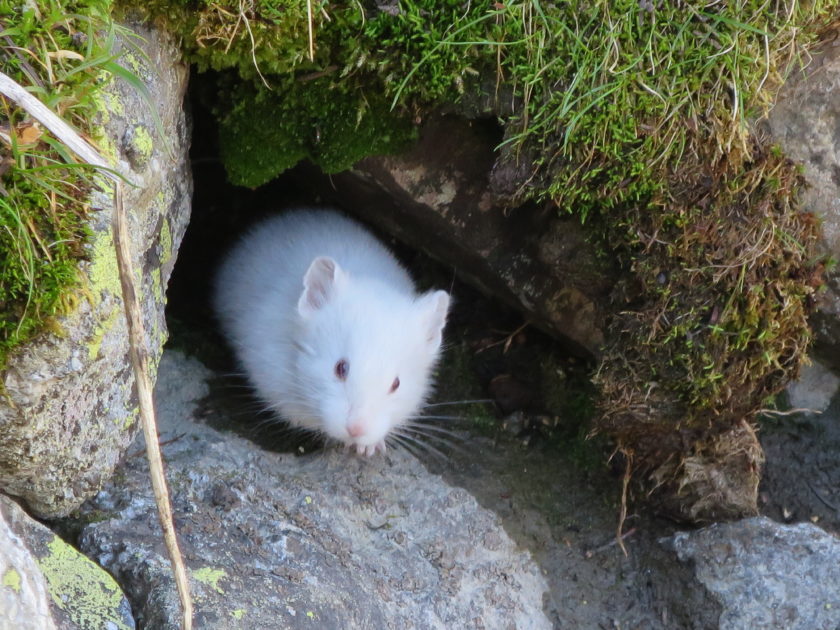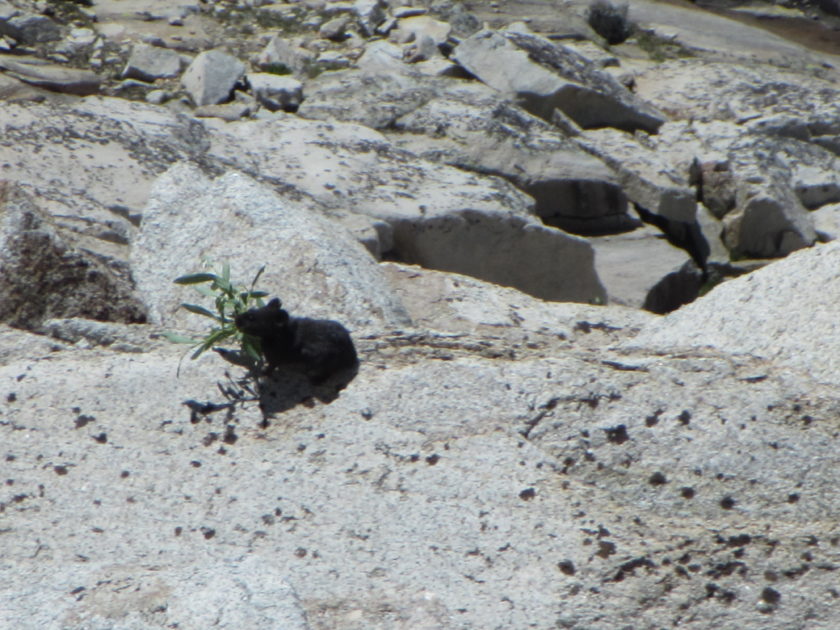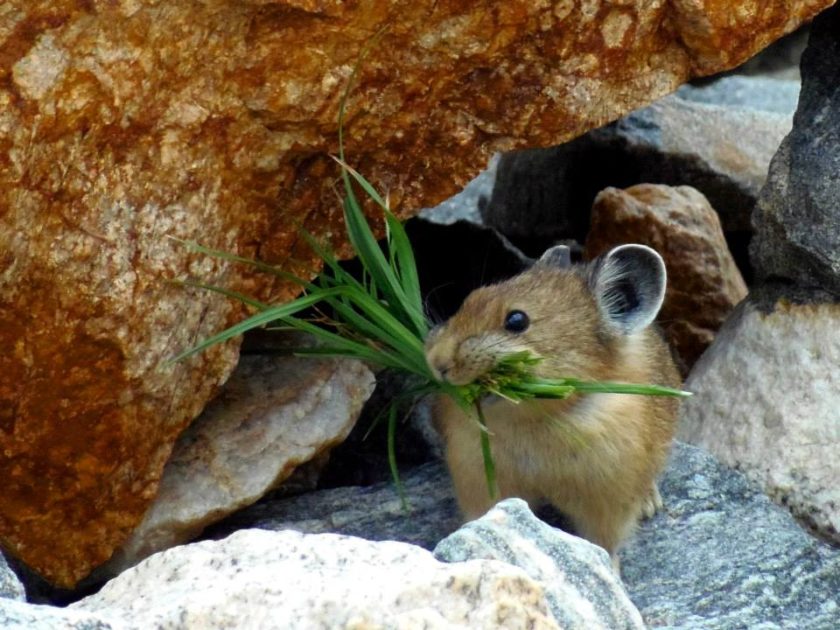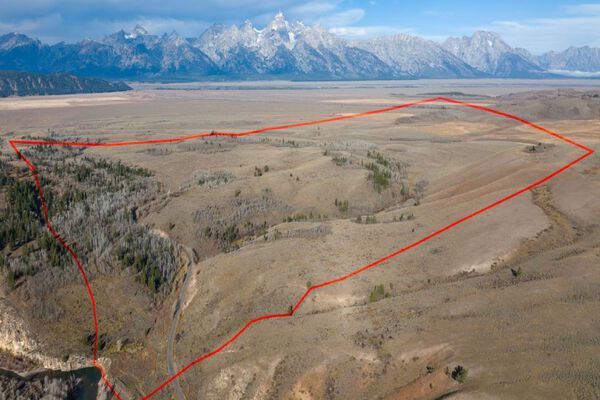Steve Cain is a retired wildlife biologist who spent his 25-year career researching and protecting the wild species of Grand Teton National Park. In his seasonal column, Field Notes, Steve shares his insight on the Greater Yellowstone Ecosystem’s incredible wildlife.
Earlier this summer, park wildlife biologist Sarah Dewey observed an albino American pika (Ochotona princeps) in a remote Teton canyon. This seems to be the first such record for the Tetons and perhaps for this species of pika across its range, which includes the mountainous areas of the western U.S. and southwestern Canada.

An albino American pika. Photo courtesy of Sarah Dewey
Albinism has been reported in only one of the world’s 30 pika species—the black-lipped pika of Asia’s Tibetan plateau. However, albinism in mammals is well known. In fact, it is believed to occur at low rates in all vertebrate species, which suggests it likely occurs in other pika populations as well. Albinism results from a complete lack of melanin—the pigment that colors skin, hair, and nails in mammals. Its genetic basis involves rare, recessive genes that require both maternal and paternal carriers to be expressed.
Leucism is a related condition that results from just a partial lack of pigment, while melanism, the development of excessive melanin, is considered the opposite of albinism. In addition to the pika, albino or leucistic moose, deer, bald eagles, and others have been observed in the Greater Yellowstone Area. One pair of bald eagles in Grand Teton produced many generations of nestlings with “pied plumage”, a form of leucism expressed by white blotches on normally dark brown areas of adult plumage. And yellow-bellied marmots, which have a distribution in North America similar to that of American pikas, also occur in dark gray to black melanistic forms. Interestingly, these occur only in the Teton Range. Melanism has also been observed in American pikas, in California’s Sierra Nevada mountains and in Montana.

A melanistic American pika.
Albinism can incur a host of liabilities, including increased risk of predation, skin disorders resulting from ultraviolet radiation damage, over-production of vitamin D, and compromised vision. Since pikas are most active during the summer months, evolutionary processes selected for cryptic coloration that blends with their rocky habitats. In contrast, white individuals stand out, making easier targets for hawks, pine marten, and other predators. As a result, most albinos of prey species have a low survival rate, which may partially explain why albinism is seldom reported in pikas.
Don’t forget your binoculars next time to head into the woods, and please remember to give all wildlife the space they need to remain wild.

A normal color phase American pika. Photo courtesy of Patrick Leary










